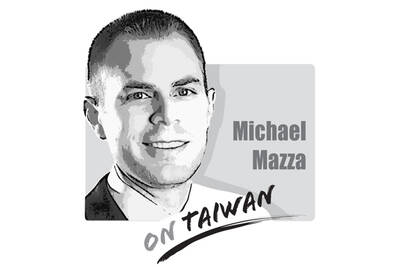It is the same story around the world. Faced with an avalanche of misinformation and disinformation online, declining trust in media and government, and the proliferation of “news deserts,” governments, philanthropists and publishers are desperately looking for ways to fund quality journalism.
In 2021, Australia broke new ground by passing the News Media Bargaining Code, compelling Alphabet (Google) and Meta (Facebook) to pay media outlets for news content shared on their platforms. This model has since gained traction worldwide, with Canada adopting its own version of the Australian law (C-18) in June and South Africa launching an investigation into the digital advertising market. Countries like Indonesia, Japan, New Zealand and Switzerland have all considered similar bills, and Brazil’s ambitious Fake News Law, which was thwarted in May, has recently been revived.
Meanwhile, in the US, the Journalism Competition and Preservation Act, aimed at allowing news publishers to engage in collective bargaining, was introduced in March by US Senator Amy Klobuchar and has since stalled. In June, California’s State Assembly passed the California Journalism Preservation Act, which would require large tech companies to share their advertising revenues with news outlets. However, the bill has been put on hold until next year.

Illustration: Tania Chou
In opposing these laws, tech giants like Google and Facebook have downplayed the importance of news content on their platforms, asserting that it can be dropped easily since audiences do not really need it. Google has also resorted to paying publishers directly, hoping that a modest sum will discourage media companies from supporting platform remuneration laws.
Our recent working paper shows that such deals do not capture the full value of the news content produced by US publishers. Our conservative estimate is that Facebook and Google should pay US news outlets about US$14 billion annually to use their content. Our study shows that Facebook owes publishers US$1.9 billion a year while Google owes US$10 billion to US$12 billion. We also include a detailed explanation of our methodology and invite others to build on and refine it.
Over the past 20 years, Google and Facebook’s advertising revenues have soared while the advertising income that traditional media rely on to fund public-interest news and investigative journalism has declined. That is not an accident. Advertising revenue shifted to platforms as individuals started consuming news on US$ platforms directly, giving advertisers a large and stable user base in the process. While Google and Facebook argue that news outlets should be grateful that platforms drive traffic to their sites, our findings suggest otherwise.
Our study builds on a large body of economic research that shows that when two parties come together, they create value. Large digital platforms and news-content creators provide complementary services that generate more economic value when used together than separately. News media supply tech companies with high-quality content that keeps their users engaged and encourages them to return to their platforms. Similarly, the platforms provide news publishers with popular, easy-to-use channels through which to disseminate news content to a larger audience.
At present, Google and Facebook dominate US digital advertising markets, allowing the two major platforms to siphon virtually all of the economic value created by online news content. Moreover, as the US Department of Justice and 38 states’ attorneys-general argue in their ongoing antitrust lawsuit against Google, the company was able to maintain its dominant position in digital advertising markets by monopolizing key technologies.
Our findings underscore the glaring disparity between what Google and Facebook pay news publishers and what they would pay if they were not powerful monopolies. Our approach to determining fairer compensation is simple, transparent and compelling. Government officials are already incorporating it into policy discussions, and publishers worldwide can use our work in their own negotiations with Google and Facebook.
Our methodology can also be useful to publishers who wish to learn how their content is being used by large language models like ChatGPT-4. However, regardless of how technology evolves, the basic principle underpinning the media system should remain the same: If you reap massive profits by using news content, you should pay for it.
Haaris Mateen is assistant professor of finance at the University of Houston. Haris Tabakovic and Patrick Holder are senior associates at The Brattle Group. Anya Schiffrin, director of the technology, media and communications program at Columbia University’s School of International and Public Affairs, contributed to this commentary.
Copyright: Project Syndicate
The image was oddly quiet. No speeches, no flags, no dramatic announcements — just a Chinese cargo ship cutting through arctic ice and arriving in Britain in October. The Istanbul Bridge completed a journey that once existed only in theory, shaving weeks off traditional shipping routes. On paper, it was a story about efficiency. In strategic terms, it was about timing. Much like politics, arriving early matters. Especially when the route, the rules and the traffic are still undefined. For years, global politics has trained us to watch the loud moments: warships in the Taiwan Strait, sanctions announced at news conferences, leaders trading
The saga of Sarah Dzafce, the disgraced former Miss Finland, is far more significant than a mere beauty pageant controversy. It serves as a potent and painful contemporary lesson in global cultural ethics and the absolute necessity of racial respect. Her public career was instantly pulverized not by a lapse in judgement, but by a deliberate act of racial hostility, the flames of which swiftly encircled the globe. The offensive action was simple, yet profoundly provocative: a 15-second video in which Dzafce performed the infamous “slanted eyes” gesture — a crude, historically loaded caricature of East Asian features used in Western

Is a new foreign partner for Taiwan emerging in the Middle East? Last week, Taiwanese media reported that Deputy Minister of Foreign Affairs Francois Wu (吳志中) secretly visited Israel, a country with whom Taiwan has long shared unofficial relations but which has approached those relations cautiously. In the wake of China’s implicit but clear support for Hamas and Iran in the wake of the October 2023 assault on Israel, Jerusalem’s calculus may be changing. Both small countries facing literal existential threats, Israel and Taiwan have much to gain from closer ties. In his recent op-ed for the Washington Post, President William
A stabbing attack inside and near two busy Taipei MRT stations on Friday evening shocked the nation and made headlines in many foreign and local news media, as such indiscriminate attacks are rare in Taiwan. Four people died, including the 27-year-old suspect, and 11 people sustained injuries. At Taipei Main Station, the suspect threw smoke grenades near two exits and fatally stabbed one person who tried to stop him. He later made his way to Eslite Spectrum Nanxi department store near Zhongshan MRT Station, where he threw more smoke grenades and fatally stabbed a person on a scooter by the roadside.